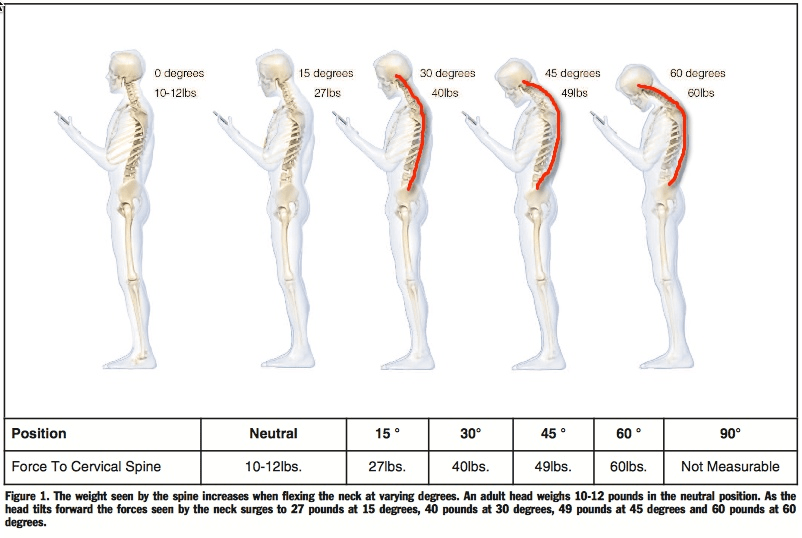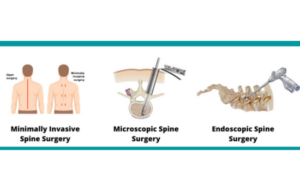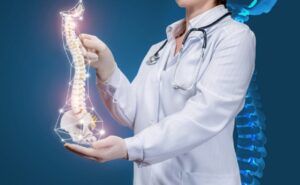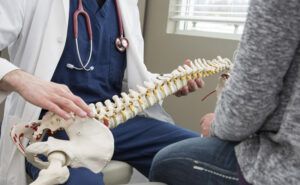
Neck Pain And Cervical Spondylosis
📅 Published on June 26, 2021
Cervical spondylosis is a non-specific word which describes the changes which can affect the spine in your neck due to routine wear and tear. This includes changes due to dehydration of discs, which can then lead to bony spurs forming called osteoarthritis.
Cervical spondylosis is very common and can be seen in the majority of patients over 60yrs of age. It’s usually asymptomatic and commonly seen on X rays or MRI done for some other reason.
Signs and Symptoms:
Most common symptoms are neck pain and stiffness which in the majority of patients can be treated with non surgical treatment.
If you are having only neck pain or persistent stiffness in your neck or at times going up to the back of the head then there is usually nothing to worry about and it’s not a harbinger of something more serious.
However if your neck pain associated with tingling or numbness in your hands or you have noticed a shooting pain down your hands or any sort of weakness in the arms or hands then it may mean that a nerve may be getting pinched in the neck which may require further evaluation and in certain cases may also need a small surgery to free the nerve.
In certain cases the age related changes and narrowing may become so severe that it may cause compression and pressure over the spinal cord. This can be quite dangerous as it can lead to weakness in all 4 limbs of the body and in advanced cases can also lead to paralysis. If you feel your grip has become weaker or you have difficulty in holding a pen or glass and find that your legs are stiff and not so strong , or you have problems controlling your bladder then you should consult a neurosurgeon at the earliest as it may be an early sign of cord compression.
Causes:
As you age, the bones and cartilage that make up your backbone and neck gradually develop wear and tear. These changes can include:
Dehydrated and herniated discs:
Disc’s are present between spinal bodies to act as cushions and shock absorbing devices. They become dehydrated by the age of 40 and become shrunken and less pliant. They can also sometimes bulge or rupture out in the spinal canal which may lead to acute pressure on a nerve or spinal cord.
Bony Spurs:
As the spine becomes weaker over time the body tries to make it stronger by forming new bones in the form of spurs or osteophytes. They can at times cause pinching of a nerve root or may even cause severe pressure over the spinal cord.
Ligaments:
The spine has multiple ligaments at multiple levels, they can become thicker and stiffer with age thus causing stiffness and decreased mobility of the neck
Risk factors
Risk factors for cervical spondylosis include:
- Age. Cervical spondylosis is a normal consequence of aging.
- Occupation. Jobs that involve repetitive neck motions, excessive loading of the neck such as overhead work, excessive computer usage may cause the process to happen faster
- Neck injuries. Previous neck injuries can increase the risk of cervical spondylosis.
Treatment:
The vast majority of patients will benefit from non surgical and non pharmacological treatment .Some of the things which may be useful are
Correction of Posture:
Making sure that your neck is as neutral as possible while sitting or standing will take the excessive load off your neck. Avoiding heavy bags or purses which may put excessive strain on your neck and shoulder.
Work space correction:
Making sure that your laptop or workstation is at your eye level, that your elbows are supported while sitting. Taking frequent breaks from your work and avoiding prolonged sitting are some simple steps which can be taken at work to prevent neck pain.
Neck strengthening exercises:
Remember that your spine is supported by the muscles of the neck. Any weakness in the spine can be counter corrected by making our neck and upper back muscles stronger thus providing the extra support to the tired neck
Medication:
Painkillers or muscle relaxants may be required in acute cases where the pain is very severe or one is having a severe muscle spasm.
Surgical intervention:
Surgical intervention is only needed in cases where a nerve is being pinched causing severe pain or weakness or in cases where the spinal cord is getting compressed or damaged.
Mobiles and neck pain
Let’s talk about mobiles, that gadget which is in our hands all the time and never too far away from our eyes. Our neck carries our head around all the time and believe it or not the head weighs about 5kg. Imagine carrying a 5kg dumbbell around above your shoulder throughout the day and you can appreciate the amount of work our neck muscles and spine has to keep doing .
This weight is when we keep our neck straight. The picture below shows how this load increases the more we keep our neck bent. Just keeping it bent by 15 degrees more than doubles this load and bending over 60 degrees makes it feel 6 times more . Now we can imagine why our neck hurts so much after watching or playing on the mobile for long hours. We should limit the duration of our mobile usage and try to keep the mobile at eye height whenever we are using it.

CONCLUSION:
Cervical spondylosis with neck pain is a common non-specific condition and just represents changes which happen to everyone due to age. In the majority of cases they are not serious and can be treated with non medical treatment. Certain cases may be serious and may need further intervention.


